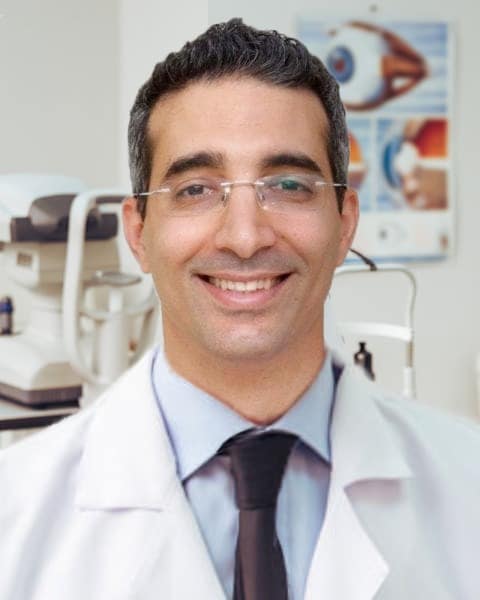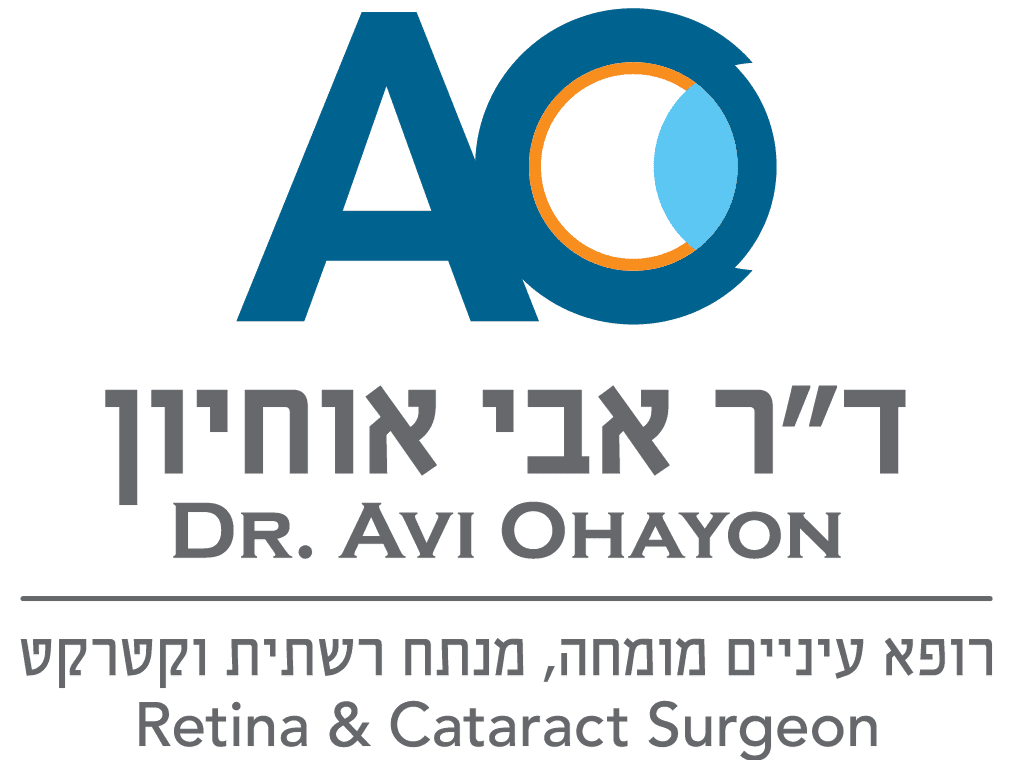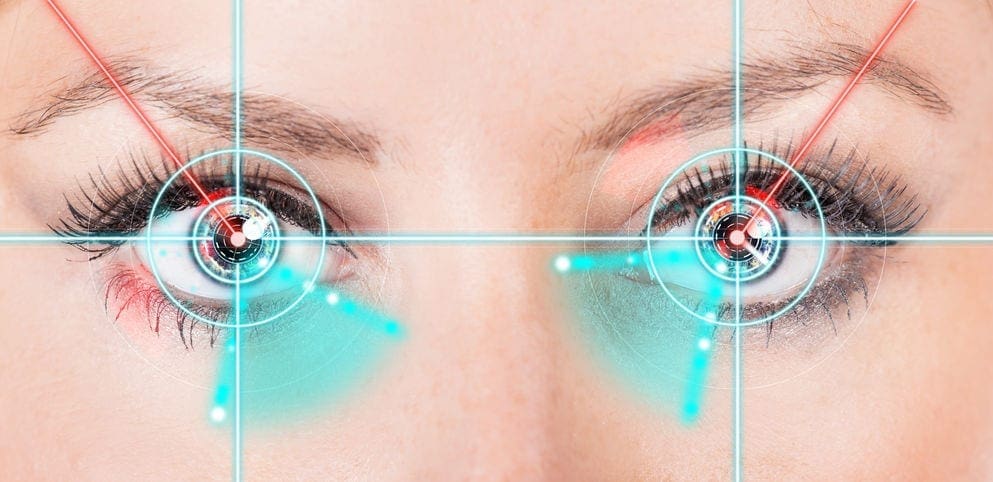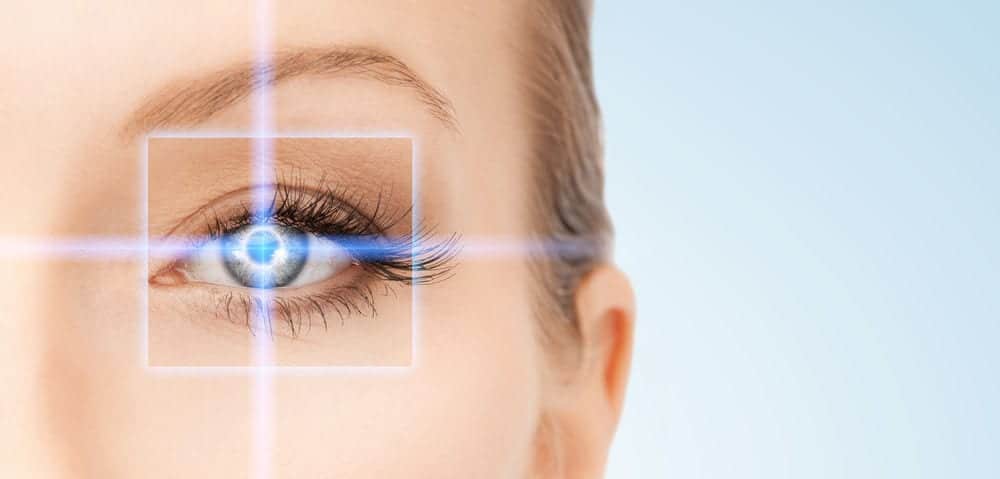Cataract: Everything You Need to Know
ד"ר אוחיון » Cataracts: Everything You Need to Know

DR. Avi Ohayon
Ophthalmologist, specialist in retina and cataract surgery
What are cataracts?
Cataract is when the natural lens inside your eye turns from clear to cloudy, milky gray. We all have a lens in each of our eyes that helps us to refract and process light. This lens is unseen by the average person and can only adequately be inspected by a healthcare professional with the correct tools and equipment.
What are the different types of cataracts?
Nuclear cataracts
This type of cataract affects the center of the eye’s lens. It can cause more nearsightedness at first or even a short-term improvement in your reading vision- but don't let this symptom fool you. With time, this cataract will cause your lens to turn more yellow and cloud your eyesight further. With more time, they may even turn a brown shade, making it difficult to distinguish the shades of colors.
Cortical cataracts
This kind of cataract expressly affects the edges of the lens of your eye. It will often start a subtle white-ish color and take the form of streaks or wedges (like a tiny undesirable slice of pizza in your eye). As it progresses, the lines will inch toward the center of your eye and alter your eyes' ability to receive and transmit light.
Posterior subcapsular cataracts
This cataract affects the back of your lens. It usually starts relatively small and opaque, making it difficult for some to identify. However, even if you can't notice it in the mirror, you may notice symptoms such as; difficulty reading, impaired/reduced vision in bright light settings, and seeing halos (or a glow) around lights. This type of cataract usually progresses the fastest.
Congenital cataracts
This form of cataract differs from the rest as it is something you are born with. It can develop only days after birth or later in childhood. Most of the time, they are due to genetics, intrauterine infection, or trauma. They can also be linked to myotonic dystrophy, galactosemia, neurofibromatosis type 2, or rubella.
Symptoms of cataracts
Several things may suggest you are developing cataract in one or both of your eyes. Most commonly, individuals with cataracts will note that they experience blurry vision or that colors appear less bright and potent and instead are perceived as a more faded or yellowy image.
You may also experience light sensitivity and struggle to see proficiently in dim lighting. Many patients remark feeling an elevated sensitivity to headlights while driving at night. Additionally, you may experience "seeing double" or seeing a ghosted image, as if someone has outlined the image in your sight with itself.
If you notice any of these symptoms, you should make an appointment with an ophthalmologist.
Who is at risk of developing cataracts?
Age is the most common cause of cataract. However, some risk factors can increase the likelihood of someone developing cataract.
For example, people who have diabetes, are exposed to excessive amounts of sunlight, smoke regularly, are obese, have high blood pressure, have a high alcohol intake, and undertake prolonged use of corticosteroid medications are at a higher risk of developing cataract.
In addition, if you have previously had eye surgery or experienced an eye injury or inflammation, you may also be at an elevated chances of developing cataracts.
How is a cataract diagnosed?
You should consult a professional ophthalmologist immediately when you notice any of these symptoms.
An ophthalmologist will complete an assessment using tests such as a slit-lamp exam, retinal exam, and refraction and visual acuity test. But, first, they will use eye drops to dilate your pupils.
Cataract treatment and surgery
Cataract can only be treated and removed through surgical methods. There are three main types of cataract surgery; Phacoemulsification, Extracapsular manual surgery, and Laser-assisted cataract surgery. After a complete examination, your doctor can determine which surgery best suits you (P.S. you can read all about cataract surgery and what to expect here!).
How to reduce the risk of developing cataracts
In the case of non-congenital cataracts, there have been no studies that definitively prove the methods to prevent or slow cataract development. However, many Doctors agree with a handful of methods that they believe may help prevent or slow the development of cataracts. These include:
- Have your eyes examined regularly. Many of us only address and care for our eyes when an issue occurs. Doctors suggest having your eyes examined by an expert regularly to detect any eye-related issues early to prevent the issue from worsening.
- Quit smoking and minimize alcohol intake. Both of these substances are addictive, and many can struggle to quit or cut back on them, smoking in particular. If you're struggling with this, please speak to your doctor about additional support such as counseling, medication, and nicotine relief.
- Live a healthy lifestyle. Especially if you have existing health issues, don't ignore them or suffer through your struggles; address them as soon as possible with the support of a medical professional and follow through with their advice. In addition, we could all benefit from a healthy balanced diet of vegetables and fruits.
- Wear sunglasses. Doctors recommend wearing quality sunglasses and eyewear that block ultraviolet B (also known as UVB) rays from entering your eyes when outdoors.
Questions & Answers
Cataract doesn’t hurt, but some may experience sensitivity due to the eyes' inability to process light.
It shouldn’t hurt during the procedure, although you may feel some pressure during the surgery. There is an expected healing period of up to 8 weeks.
Cataract is increasingly common as we age. Some estimate that at the age of 80, roughly 50% of your peers will have (or have had) cataract.
IOL stands for intraocular lens. During cataract surgery, your natural lens is removed and replaced with an artificial lens ( aka IOL).
This is determined on a case-by-case basis, but if your vision is impaired, you should investigate and treat it to ensure a safe road experience for all.
The fact is, it's a personal decision. However, there is no other method of treatment other than surgery. Cataract can affect your daily life, stop you from driving, and sometimes lead to complete vision loss.

DR. Avi Ohayon
Ophthalmologist, specialist in retina and cataract surgery






